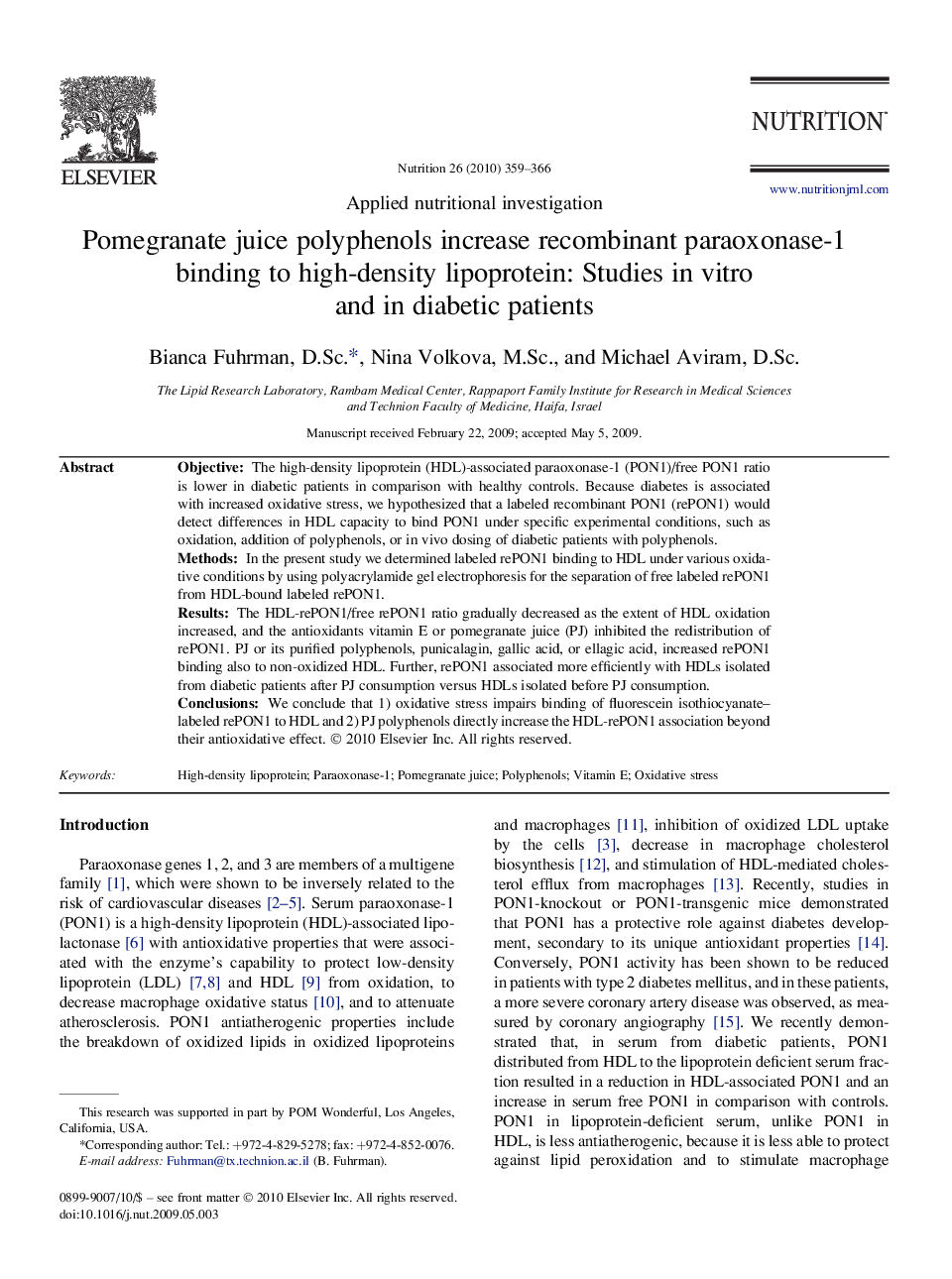| Article ID | Journal | Published Year | Pages | File Type |
|---|---|---|---|---|
| 6090620 | Nutrition | 2010 | 8 Pages |
ObjectiveThe high-density lipoprotein (HDL)-associated paraoxonase-1 (PON1)/free PON1 ratio is lower in diabetic patients in comparison with healthy controls. Because diabetes is associated with increased oxidative stress, we hypothesized that a labeled recombinant PON1 (rePON1) would detect differences in HDL capacity to bind PON1 under specific experimental conditions, such as oxidation, addition of polyphenols, or in vivo dosing of diabetic patients with polyphenols.MethodsIn the present study we determined labeled rePON1 binding to HDL under various oxidative conditions by using polyacrylamide gel electrophoresis for the separation of free labeled rePON1 from HDL-bound labeled rePON1.ResultsThe HDL-rePON1/free rePON1 ratio gradually decreased as the extent of HDL oxidation increased, and the antioxidants vitamin E or pomegranate juice (PJ) inhibited the redistribution of rePON1. PJ or its purified polyphenols, punicalagin, gallic acid, or ellagic acid, increased rePON1 binding also to non-oxidized HDL. Further, rePON1 associated more efficiently with HDLs isolated from diabetic patients after PJ consumption versus HDLs isolated before PJ consumption.ConclusionsWe conclude that 1) oxidative stress impairs binding of fluorescein isothiocyanate-labeled rePON1 to HDL and 2) PJ polyphenols directly increase the HDL-rePON1 association beyond their antioxidative effect.
